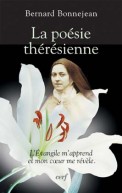
Clio et ses poètes
Collection Cerf Littérature
364 pages - mars 2007
42,90€
La poésie catholique de 1870 à 1914 est solidaire de l'histoire de son temps et coïncide avec l'âge d'or du laïcisme de la pensée et, pour une part, de la politique anticléricale inaugurée par les gouvernements radicaux. Les grands poètes catholiques français de l'époque, confrontés au rationalisme et au matérialisme athée, apparaissent souvent à la fois comme des apologistes et des résistants, polémistes et militants engagés. En fait, tout avait été réuni, et dans tous les domaines (théologie, études bibliques, histoire, philosophie, sciences, art sacré, peinture et musique) pour assurer le triomphe de ce que Mgr Jean Calvet appelle le Renouveau ou la Renaissance catholique. Cependant, le plus saisissant symptôme du retour de l'intelligence à la foi catholique, celui qui frappa le plus l'opinion, fut marqué par le comportement des écrivains, notamment des poètes. La publication de « Sagesse », en 1880, pouvait donc être considérée comme un événement majeur, à la fois novateur et fondateur, même si l'acte de foi verlainien était davantage le résultat d'un cheminement personnel douloureux qu'une volonté nette de réintégrer l'Église connue dès l'enfance. Cependant, le Verlaine de « Sagesse » inaugure bien un mouvement de conversions, amorcé à peine à la fin du deuxième tiers du siècle, et qui prend par la suite une importance énorme, au point qu'on a pu dire qu'il devint une des caractéristiques de la vie littéraire française. D'une certaine façon, la poésie catholique de Verlaine à Péguy est donc le produit d'une histoire. Peut-être serait-il plus juste d'affirmer que les poètes ont inséré leur lyrisme dans une vision à la fois personnelle et universelle de l'histoire, de l'aventure humaine, dont le sens est chrétien ? Leur poésie est totalement catholique parce que leurs convictions, alors à contre-courant d'une opposition ouvertement déclarée, sont pleinement catholiques.
--
Catholic poetry from 1870 to 1914 reflects the history of that period and coincides with the golden age of secularism in thinking and, to some extent, the anticlerical policies introduced by radical governments. The great French Catholic poets of the period, confronted with rationalism and atheistic materialism, frequently come across as apologists and resistants, polemicists and committed militants. But in reality, everything had been marshalled, and in every domain (theology, Bible studies, history, philosophy, the sciences, religious art, painting and music) to assure the success of what Mgr Jean Calvet calls the Catholic Revival or Renaissance. However, the most striking indication of the return of the intelligentsia to the Catholic faith, and the one that most fired opinion, was in the conduct of writers, and notably poets. The publication of ‘Sagesse’ in 1880 could therefore be considered a major event, both innovating and founding, even if Verlaine’s act of faith was more the result of a private and painful evolution rather than a straightforward desire to return to the Church he’d known as a child. However, the Verlaine of ‘Sagesse’ truly inaugurated a conversion movement, which had scarcely begun two-thirds of the way through the century, but which subsequently gained greatly in importance, to the point that one might have described it as a feature of French literary life. In a certain fashion, Catholic poetry from Verlaine to Péguy is the product of a history. Perhaps it would be fairer to state that those poets infused with their lyricism a personal and universal vision of history and the human adventure, whose significance is Christian? Their poetry is totally Catholic because their convictions, at that time running against the current of overtly declared opposition, are wholly Catholic.
--
Catholic poetry from 1870 to 1914 reflects the history of that period and coincides with the golden age of secularism in thinking and, to some extent, the anticlerical policies introduced by radical governments. The great French Catholic poets of the period, confronted with rationalism and atheistic materialism, frequently come across as apologists and resistants, polemicists and committed militants. But in reality, everything had been marshalled, and in every domain (theology, Bible studies, history, philosophy, the sciences, religious art, painting and music) to assure the success of what Mgr Jean Calvet calls the Catholic Revival or Renaissance. However, the most striking indication of the return of the intelligentsia to the Catholic faith, and the one that most fired opinion, was in the conduct of writers, and notably poets. The publication of ‘Sagesse’ in 1880 could therefore be considered a major event, both innovating and founding, even if Verlaine’s act of faith was more the result of a private and painful evolution rather than a straightforward desire to return to the Church he’d known as a child. However, the Verlaine of ‘Sagesse’ truly inaugurated a conversion movement, which had scarcely begun two-thirds of the way through the century, but which subsequently gained greatly in importance, to the point that one might have described it as a feature of French literary life. In a certain fashion, Catholic poetry from Verlaine to Péguy is the product of a history. Perhaps it would be fairer to state that those poets infused with their lyricism a personal and universal vision of history and the human adventure, whose significance is Christian? Their poetry is totally Catholic because their convictions, at that time running against the current of overtly declared opposition, are wholly Catholic.
- Dimensions : 135x215x28
- ISBN : 9782204080521
- Poids : 470 grammes
Avec la collaboration de : Bertrand Gamelin
DU MÊME AUTEUR
> VOIR TOUS LES LIVRES DE l'AUTEUR








